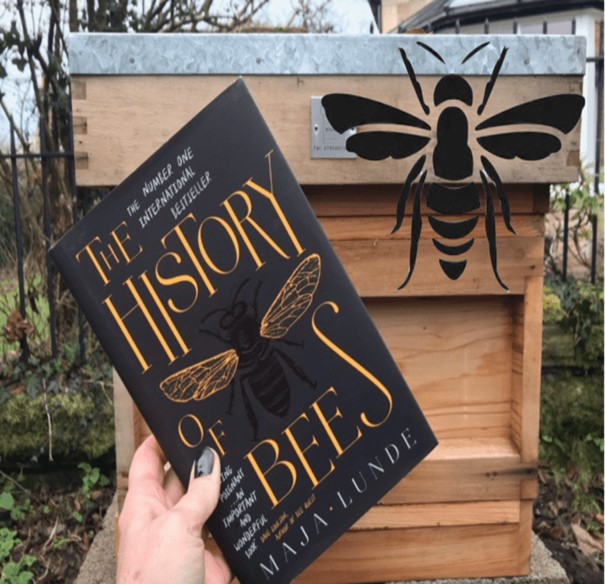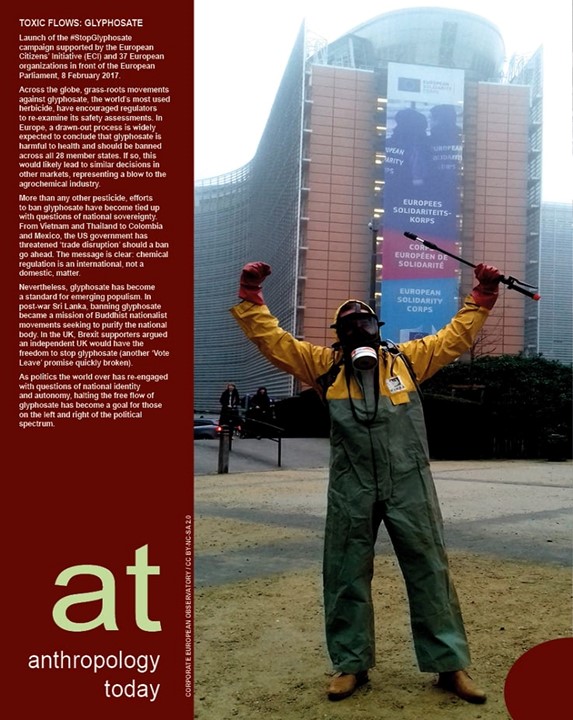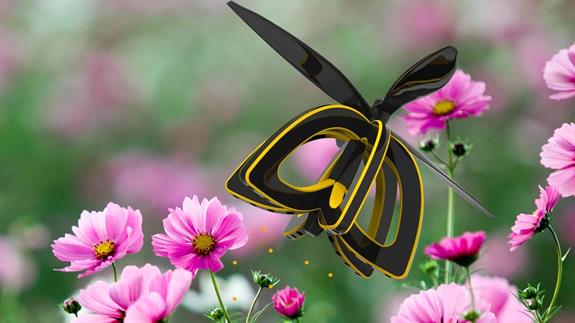GMO apocalypse or about the so-called mysterious extinction of bees
»The moment the bees disappear, civilization disappears, and the moment man disappears, heaven on earth will be created in the same instant.«
– Ivan Ladislav Galeta
In her book Oneness vs. the 1 %: Shattering Illusions, Seeding Freedom (2020), physicist, environmental activist, and (eco)feminist Vandana Shiva – famous for the Chipko ecofeminist movement, and even more famous as a fierce critic of Monsanto, founder of Navdanya, a movement for seed freedom and biodiversity on Earth – states the following:
»Climate change is not just global warming, to which the mechanical response is ‘global cooling’ by life-destroying geoengineering experiments. Climate change is a disruption of the Earth’s processes through which she regulates the climate. The consequence of this disruption is climate chaos and extreme and unpredictable events.«
Within this context, I will focus on the global disappearance of bees. This phenomenon is referred to by scientists as »Colony Collapse Disorder« (CCD), and studies show that it is caused by glyphosate, the active substance found in the Roundup herbicide, which is massively used in the production of GMO crops today. As Marijan Jošt stated:
»It has been established that glyphosate can influence the learning behavior of bees and, over time, affect the characteristics of the swarm in the hive. In practice, the concentrations of Roundup herbicide used change (decrease) the short-term memory of bees. As the bees do not die immediately but return to the hive, they bring the herbicide into contact with the larvae. This means that young bees will have a smaller flight circle than the hive, and over time, this will lead to the disappearance of the swarm,«
Geneticist and plant breeder Marijan Jošt pointed out in an article from 2014 that the dying and extinction of bees had been written about for ten years. Initially, cell phones and radiation were blamed, then the chemicals used in food production. The National Service for Agricultural Statistics of the USA reports a reduction in the number of bees by half (source). Based on apocalyptic climate changes in 2021, one year after the beginning of the pandemic’s global impact, the disappearance of bees began to be discussed more seriously, a theme ‘fictionally’ hinted at by Maja Lunde in her triadic dystopian novel, The History of Bees (2015).
The CCD condition is described as a state when the bees become so disoriented and poisoned that they no longer know how to find their way back to their hive or, after returning to the hive, die of poisoning. Since 2006, beekeepers have begun observing the so-called »Colony Collapse Disorder,« noticing empty hives; typically, sick bees tend to leave the hive to die outside to prevent infection from spreading within the hive.
Drawing on the warnings about the dangers of GMO food, systematically reported on a global scale by Árpád Pusztai, and concerning the Croatian context by Marijan Jošt, I would like to remind you of two recent cases of the so-called »mysterious« extinction of bees within regional frameworks (Serbia, Croatia).
In 2019, a case occurred where 1,668 bee colonies died due to a major bee poisoning incident in Kikinda, Serbia. Similarly, in Međimurje, Croatia, in 2020, approximately 57 million bees died. Notably, none of the major media outlets raised the possibility of glyphosate’s influence on these mass bee deaths.
Referring back to the earlier case in Kikinda in 2019, it was noted that this type of poisoning had not been previously recorded. »The suffering of the bees was practically total, and those that initially survived the poisoning within closed broods died shortly after hatching in the following days. This speaks volumes about the potency of the pesticide used,« as reported by the news media.
Regarding the second case in Međimurje in 2020, where 57 million bees died, major media outlets did not raise the possibility of glyphosate’s influence until September 2020. Beekeeper Antun Tot highlighted that the bees seemed completely disoriented and simply fell. »One might think they had gone mad, but the cause is an insecticide used on certain fields« (Rukavina, 2020).
Journalist Maro Marušić, citing data from Monsanto, pointed out Monsanto’s corn is planted in both western and eastern Croatia. However, in regions such as Dalmatia and Herzegovina, hybrid corn is not planted, yet glyphosate is sold for use in viticulture and fruit growing. The same glyphosate preparation sold by Monsanto in Dalmatia is contentious worldwide. This herbicide’s active ingredient, Roundup, a Monsanto product, was declared by the World Health Organization (WHO) a year ago as ‘probably causing cancer’ (Marušić, 2016).
Simultaneously, ecologists warn that various non-human animals carry microplastic particles in and on them. Research conducted in Copenhagen and in semi-urban and rural areas near that city showed that thirteen different synthetic polymers can be found on the bodies of bees. »The most common is polyester, followed by polyethylene and polyvinyl chloride,« as stated by Andrija Filipović.
In this context, Alf Hornborg raises the question of the relationship between anthropology and the Anthropocene, noting that most anthropologists are still preoccupied with understanding local experiences rather than global processes like climate change.
The documentary Silence of the Bees (Nature Documentary, screenplay by Doug Shultz) from 2011 warns about the mysterious death of bees. In the winter of 2006, beekeepers noticed an unusual phenomenon with the mass dying of bees. In order to increase awareness of the importance of bees for preserving the balance in nature and the survival of all humanity (as it is assumed that a third of the total food for humanity depends directly on bee pollination), the United Nations declared May 20 as World Bee Day in 2017, upon the initiative of the Republic of Slovenia.
Anthropology Today magazine from August 2021 warned that worldwide citizen movements against glyphosate, the world’s most widely used herbicide, have prompted safety assessments. In Europe, it is expected that a long-term process will conclude that glyphosate is harmful to health and that it should be banned in all 28 member states, which would represent a significant blow to the agrochemical industry.
From Vietnam and Thailand to Colombia and Mexico, the US government has threatened trade problems if a ban is implemented. The message is clear: chemical regulation is an international, not a domestic matter, as the authors of the aforementioned issue of the magazine Anthropology Today point out. In this regard, the relationship between anthropology and the Anthropocene, as diagnosed by Alf Hornborg, must move towards contextualizing the global crisis.
On the other hand, glyphosate has become the standard for the new populism. In Great Britain, Brexiteers argued that an independent Great Britain would have the freedom to stop glyphosate; however, it was just another promise that was quickly forgotten. Since 2010, glyphosate has helped foster new coalitions between environmentalists and national groups calling for sovereignty from agrochemical regulations. Glyphosate has played a role in shaping developments in post-war Sri Lanka and the European Union before and after Brexit, as summarized by Tom Widger in the article »Glyphosate Thresholds« in the aforementioned issue of Anthropology Today.
The mythology and symbology of bees, in their absolute symbolization of life, lead to Einstein’s exact saying: »If bees disappear from the planet Earth, man as a species will have about four years left to live,« which was often repeated in the regional framework by the multimedia artist Ivan Ladislav Galeta as a serious warning: »The moment the bees disappear, civilization disappears, and the moment man disappears, heaven on earth will be created in the same instant.«


The long version of the article was previously published in Croatian language: »GMO apokalipsa ili o tzv. tajanstvenom izumiranju pčela.« In: Doomsday, Drugi svezak – Glad, eds. Marija Lojanica and Dragan Bošković, Kragujevac, FILUM, 2020., pp. 35-47. The article is funded by the Croatian Science Foundation (project No.IP-2019-04-5621 “The cultural aspect of animal studies: interdisciplinary starting points and traditional practices”).

Suzana Marjanić
Suzana Marjanić je zaposlena na Inštitutu za etnologijo in folkloristiko v Zagrebu na Hrvaškem, kjer se ukvarja s teorijo rituala in mita, s kritičnimi animalističnimi študijami in študijami performansa. Objavila je knjigi Glasovi “Davnih dana”: transgresije svjetova u Krležinim zapisima 1914–1921/22 (2014) in Kronotop hrvatskoga performansa: od Travelera do danas (2017), ki je prva knjiga o zgodovini perfomansa na Hrvaškem. Marjanić je zanjo prejela letno nagado Hrvaške sekcije AICA in državno nagrado za znanost.
Sourejala je sedem zbornikov, med njimi Ekofeminizam: između zelenih i ženskih studija (2020), ki ga je sourejala z Goranom Đurđevićem in Mačkozbornik: od Bastet do Catwoman (2022), ki ga je uredila skupaj z Rosane Ratkovčić. Od leta 2001 je članica društva Prijatelji Životinja.

